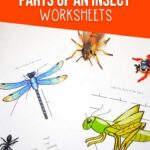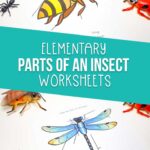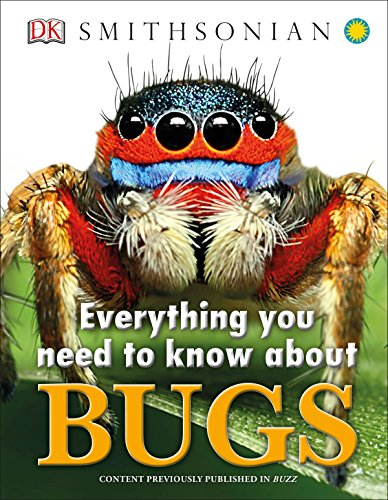Parts of an Insect Worksheet
Creepy, crawly, and cool! Insects are amazing, and you’ll want these parts of an insect worksheet to start off your study of insects. Then crawl over and check out more Free Insect Worksheets for Kids!
With the warm weather outside, this is the perfect time to get into bugs. Even if your child is a bit timid when it comes to bugs, educating them about bugs might help them hop right over that worry and fear. We use these to get accustomed to bugs and I think that it really does help!
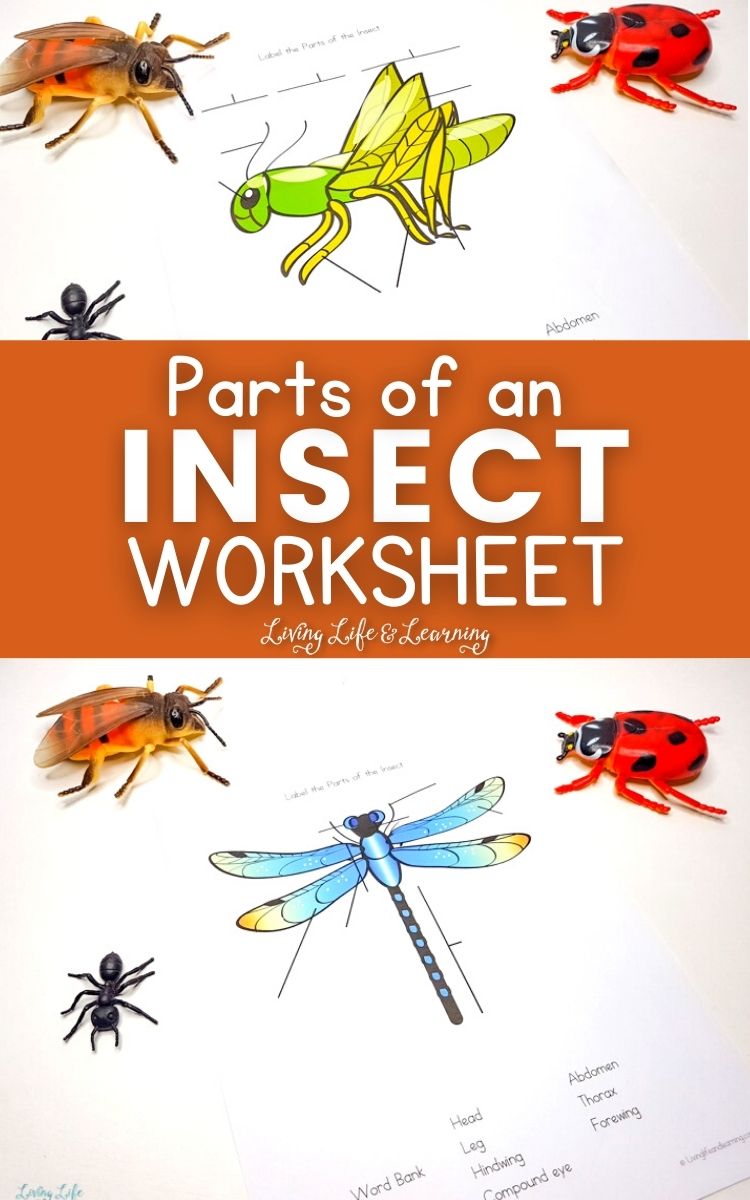
This post may contain affiliate links meaning I get commissions for purchases made through links in this post. Read my disclosure policy here.
Parts of an Insect Worksheet
Use these worksheets as a simple way to help your child identify bug parts and learn more about them.
The basic parts of an insect
Insect bodies all have some things in common, and then they have some things specific to their genus or family.
Be certain to check out our Bug Counting Mats as well!
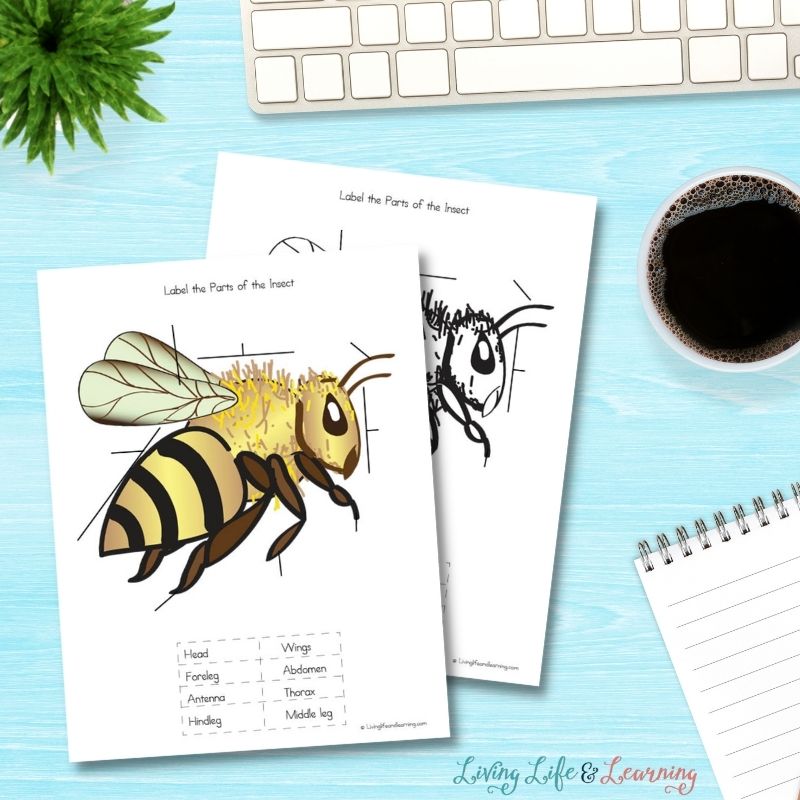
All insects, for example, have 6 legs and antennae, and a body divided in 3. But some kinds of insects have wings and some have shells. Some have a more prominent proboscis (sucking mouths), some have more prominent mandibles (biting mouths), and some have just labium (sponging mouths).
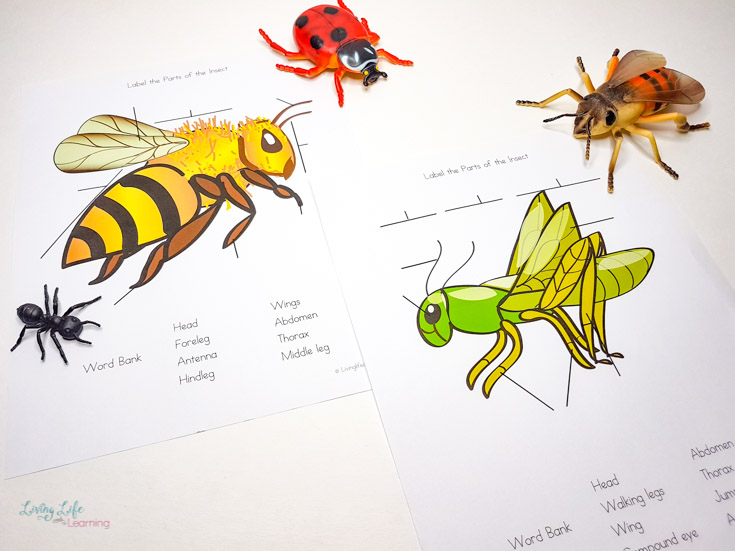
Every insect has 3 main body parts — the head, the thorax and the abdomen.
The head of the insect is where the antenna, the compound eyes and the external mouth parts are. Mosquitos will have proboscis, beetles generally have mandibles, and houseflies have labium, as an example.
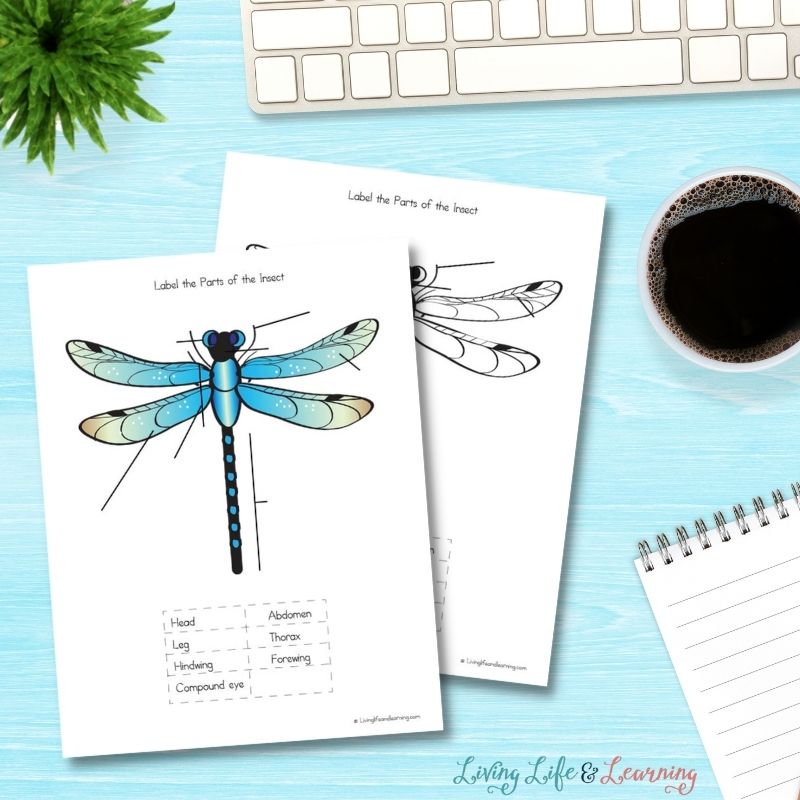
The thorax is the middle part of the insect, and it’s where the legs (and wings, if there are any) attach. All true insects have 6 legs – 3 on each side of the body. Some insects may have just 2 wings, and some may have 4.

The abdomen is the end part of the insect, and usually the largest and most recognizable. This is where the insect’s internal organs are usually contained, such as their digestive system or reproductive organs. The abdomen is reactive, and it will expand as the insect feeds.
Located either on the thorax or the abdomen are the spiracles, the breathing holes of the insect. And all true insects have exoskeletons, or skeletal systems on the outside of their bodies, made of chitin, a kind of biological plastic.
If you need more insect ideas, try this insect dice game.
Recommended Bug Books for Kids
Bugs are incredible creatures, and your students will want more. Check out our favorite books and stories about bugs — from the exotic to the common.
Ultimate Bugopedia: The Most Complete Bug Reference Ever (National Geographic Kids)Bugs A to ZSuper Bug Encyclopedia: The Biggest, Fastest, Deadliest Creepy-Crawlers on the Planet (Super Encyclopedias)Hello, World! Backyard BugsBackyard Bugs: An Identification Guide to Common Insects, Spiders, and MoreEverything You Need to Know About Bugs
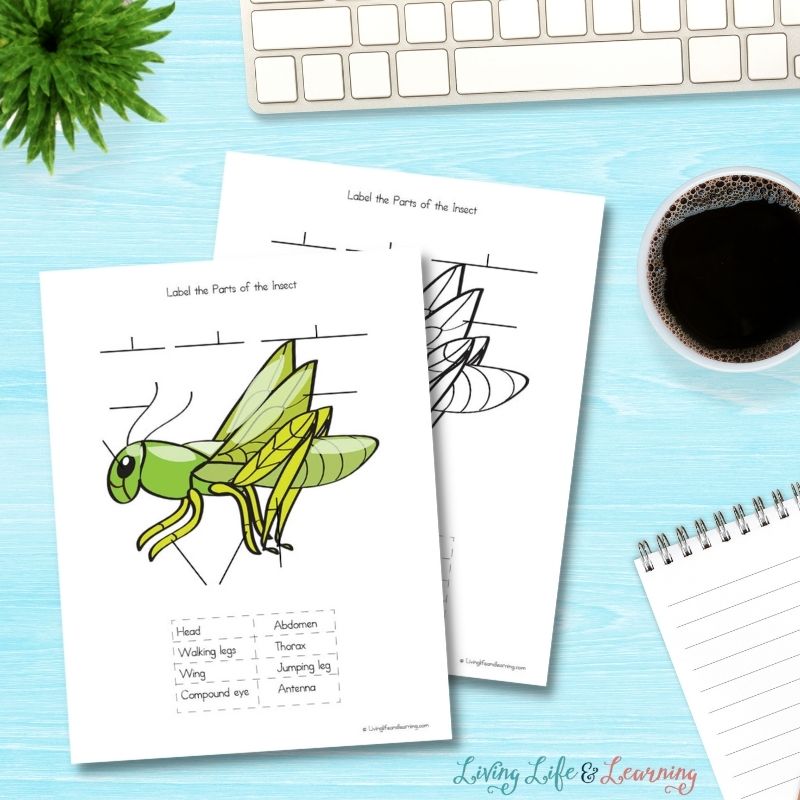
Recommended Bug Kits
And there’s nothing like studying real life bugs to get your kids excited. Grab one of these kits, and get out there to look at bugs
INNOCHEER Explorer Kit & Bug Catcher Kit for Kids Outdoor ExplorationGIFTINBOX Bug Catcher Kit for Kids, Outdoor Explorer KitJVJQ Kids Explorer Kit – 16 Pcs Outdoor Exploration kit Bug Catcher kit for KidsOutdoor Explorer Kit – Bug Catcher KitESSENSON Outdoor Explorer Kit & Bug Catcher KitNATIONAL GEOGRAPHIC Backyard Safari Kit
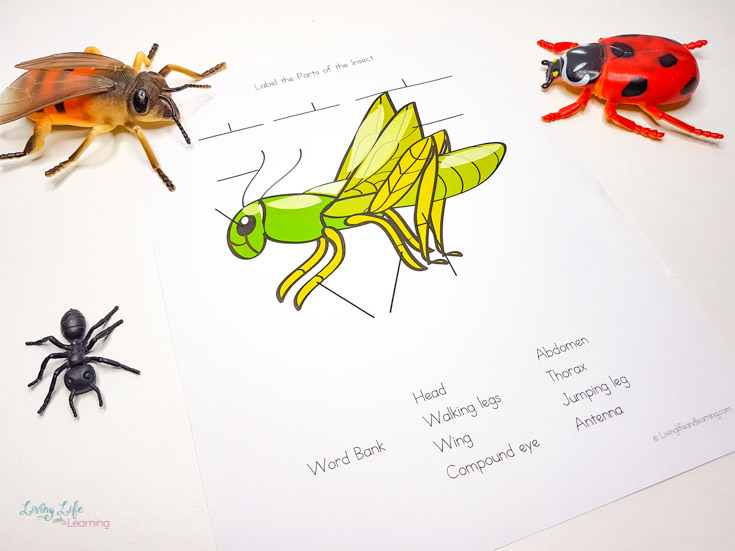
See the other activities in my 10 days of Biology Worksheets for Elementary Students series.
You need more facts about insects? Check out these Preschool Insect Books that will make learning more fun!
Download the Parts of an Insect Worksheets below:
Today’s sponsor for the 10 Days of Spring Homeschooling Fun series is Carole P. Roman.
Carole is the award-winning author of over fifty children’s books. Whether it’s pirates, princesses, or discovering the world around us, her books have enchanted educators, parents, and her diverse audience of children.
Take your pick from Roman’s diverse cultural and historical series. Lose yourself in fun tales with your child as you go to travel the seven seas or stretch their imaginations with if you were me and lived in… Mars. From Australia to Turkey, Brazil to Germany, jet set with Carole P. Roman and learn what life is like in any of 22 countries.
More Bug Worksheets
Dragonfly Life Cycle Worksheet
Life Cycle of a Butterfly Worksheet
Bug & Insect Printables & Activities for Kids by 3 Dinosaurs


